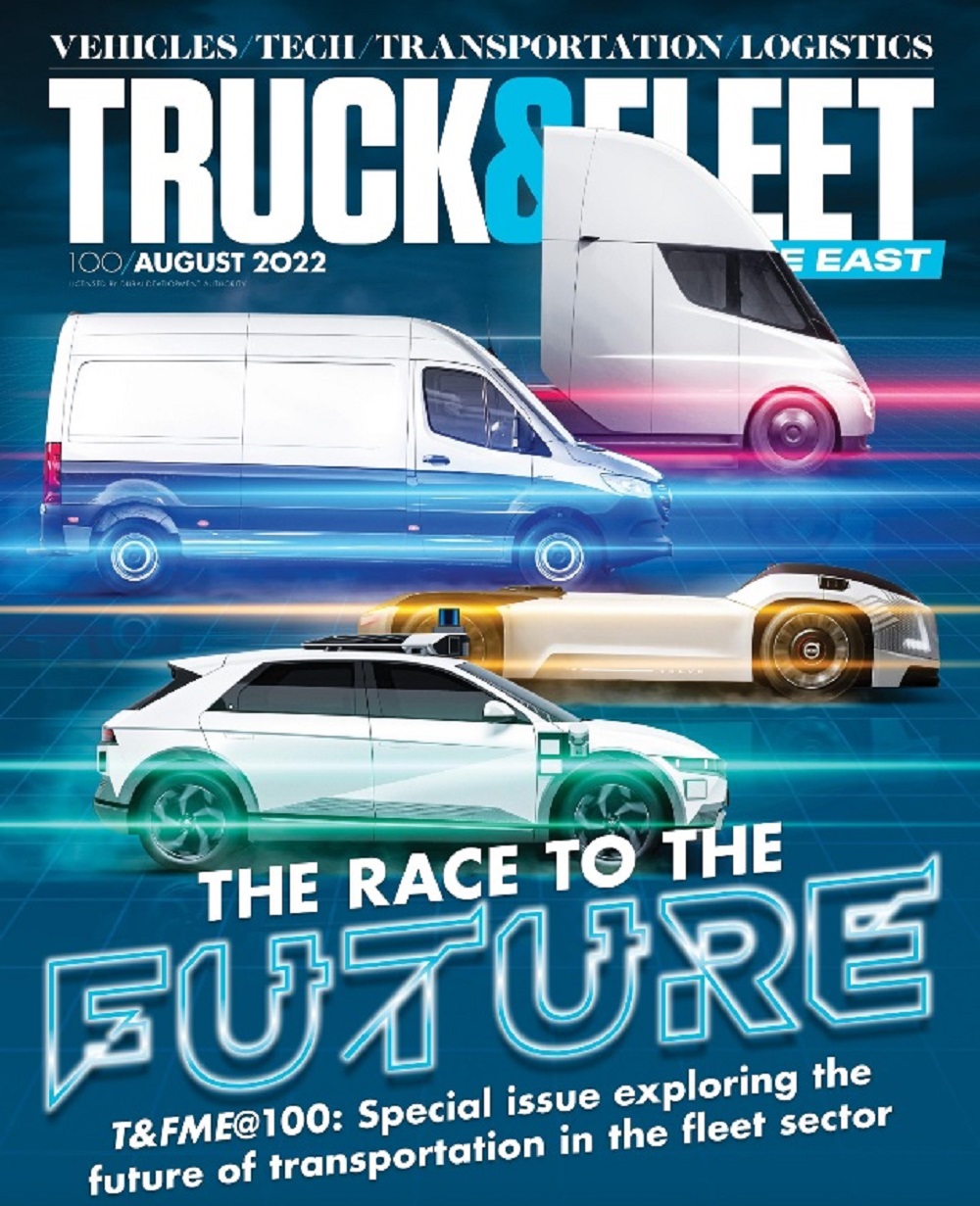Well, here we are. The 100th issue of Truck&Fleet Middle East is out now for download and hard copy.
After eight years, reaching the milestone feels like a moment to celebrate how far the transportation and logistics industry has come, and also the best time to look forwards to an exciting future. As many of us have learned the hard way over the past decade, the only thing certain about change is change itself. And which is why we are dedicating this special occasion with a look at the Future of Transportation.
As many of you will know, we also have our upcoming Fleet and Mobility Summit at the end of September and both are looking forwards not backwards because fleets must learn from the past but earn from the future.

Bear with me for a moment though as I recall the early months of the magazine. It was then a supplement to our sister publication Construction Machinery Middle East and like that publication T&FME (as it was to be better known in the years ahead) was primarily concerned with the construction industry in the region. Most of the vehicles were heavies, like the Volvo FMX, a truck which was then on its way to becoming a pioneer in automated transmissions here, and the last generations from Daimler, Renault, Scania, et al.
Most were also coming to the end of their respective lives; and ones that had been dogged by the need to keep up with the engine emission changes that were rapidly being introduced. Well, in many other markets. Here in the Middle East, we were still largely rocking our Euro 2 and 3 trucks on site and in quarries. At times, writing the early issues of the magazine it felt like the rest of the world was continuing on, despite us, not with us.
That changed with the introduction of Euro 4 standards in the UAE and we were at least able to start considering that maybe we weren’t the legacy and traditional market we were stereotyped as.
By the time, I returned from my 18 month sabbatical in 2016, it was obvious that things were moving on and the conversation has moved on to what technology that in other markets can now help drive down costs and help fleets stay in markets such as urban deliveries and waste management as rules and regulations rush to meet climate ambitions.
The nature of the fleet business has changed and widened. It is no longer about large heavy fleets or rickety pickups. E-commerce and digitalisation are creating new styles of professional vehicle operations and we have embraced that in the magazine. I really believe that it has never been a more exciting time to be in this sector or industry – and hopefully you’ll see why in this issue.
One last thing. I just want to thank all the guys that are working and have worked on the magazine and the events.
Without people like Bipin Soneji, Jerusha Sequeira, Stian Overdahl, Brian Fernandes, Simon Cobon, Percival Manalaysay, Paul Godfrey, Jason Saundalkar, Andy Pitois and our publisher Raz Islam – who was crazy enough to green light the magazine in the first place and has provided his invaluable support over the years – we wouldn’t be here today. And most of all, thank you to all our audience. See you at the 200th issue.



